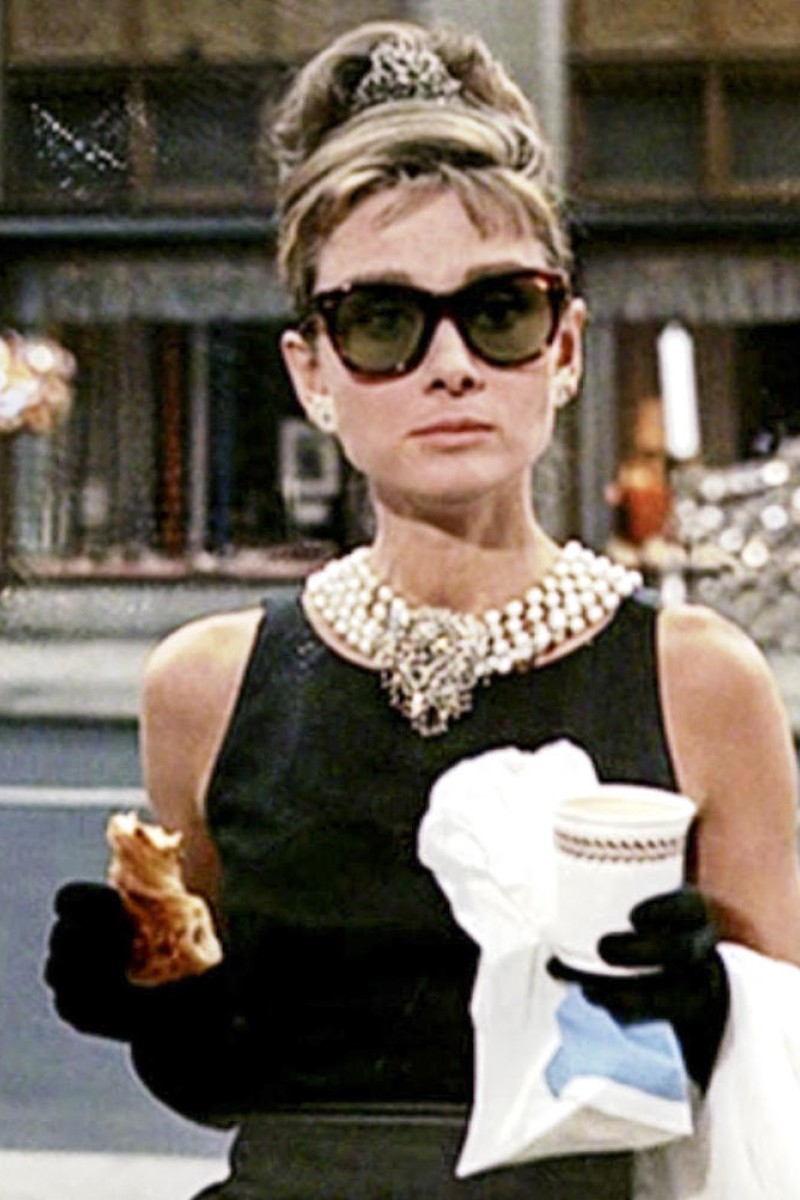 Audrey Hepburn in Breakfast at Tiffany's
Audrey Hepburn in Breakfast at Tiffany's There is nothing quite as irreplaceable, versatile or timeless as the little black dress, or "LBD". Despite being first designed in the 1920s, LBDs remain a staple in every modern woman's wardrobe.
Since the term refers to any pure or mainly black dress, there are few restrictions when it comes to wearing or designing an LBD.
As part of French cultural festival Le French May, Elements shopping mall, in Tsim Sha Tsui, collaborated with curator Anne Camilli to display a wide variety of French LBDs and accessories, such as handbags and jewellery to showcase this most stylish nation's style.
The LBD continues to be classy and chic, but its lasting popularity may surprise some people. Camilli says it remains such a staple for women because it "outlines your figure", is "always chic" and "very feminine".
A woman "always looks best in black", Camilli says, adding that many claim wearing black outfits makes them look "better".
There are many elaborate vintage and specially crafted items are on show at the exhibition, "The Essential Accessories of the Little Black Dress". But Camilli favours accessible, everyday accessories to use with the LBD. The type of accessory is not too important, because the "LBD is the base - you can pick whatever you want to adorn it", she says. "The accessory doesn't have to be expensive … just special."
Camilli says it is most important that accessories for the LBD are chosen according to your taste, so you feel confident with them.
Her own favourite, go-to accessory is a simple pair of black stilettos - a "perfect match", Camilli says.
Modern LBDs come in a range of types and styles. Designers such as Coco Chanel, Jean Patou and Christian Dior constantly recreated and refined LBDs over the years, and as each decade adopted a particular look, so the LBD evolved, resulting in a brilliant mix of past and current trends, Camilli says. "All styles co-exist."
Chanel first showed an LBD in 1926. It was sleek and straight, Camilli says, and affordable and stylish, adding it looks better when simple.
The dress quickly grew popular because of its inexpensive sophistication. Over the next few decades a few changes were made, with a lower hemline and increasingly conservative style.
After the second world war, designers turned from natural materials, such as silk, cotton and wool, to synthetic fibres such as acrylic, nylon and polyester. This in turn led to a shift in styles.
The 1960s saw a split between two generations: younger women preferred shorter hemlines, slits and sheer fabrics; older women wanted more elegant, close-fitting sheath dresses, such as the iconic Hubert de Givenchy dress that British actress Audrey Hepburn wore in the 1961 film Breakfast at Tiffany's.
Camilli admires this LBD's "three-hole" style. "It's tight-fitting, straight … the perfect dress."
She says designers, and Hepburn's performance, were pivotal in ensuring the LBD's lasting popularity. Hepburn was "such a real woman … so naturally chic and sophisticated".
From the mid-1960s, the LBD became more elaborate, with ruffles and other embellishments.
Hippies inspired the loose, casual style of the late 1970s, which influenced the long, straight dresses of the early 1980s. These in turn were reminiscent of the original LBD, but with broad shoulders and peplums, where fabric is gathered or pleated at the waist to create a hanging frill.
Close-fitting dresses, emphasising the figure, grew popular in the late 1980s, while a simpler LBD, in a variety of lengths, was all the rage in the 1990s.
Designers have continued to revisit fashions from earlier decades resulting in an assortment of LBD styles. Although new kinds of LBD are being invented and revamped, Camilli says the basic rule of fashion dictates a graceful, multi-purpose LBD that is simple, long-lasting and feminine.
She says the exhibition shows how versatile the LBD is, and why it remains relevant and fashionable today.
"The Essential Accessories of the Little Black Dress", on the first floor of the Metal and Water Zones, at Elements, finishes on Wednesday.
